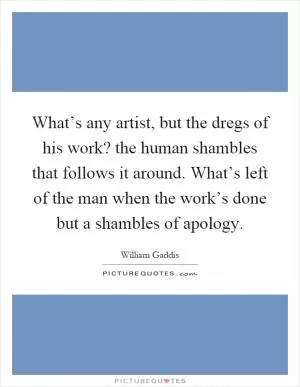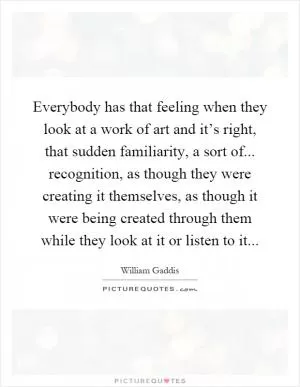There is nothing more distressing or tiresome than a writer standing in front of an audience and reading his work

There is nothing more distressing or tiresome than a writer standing in front of an audience and reading his work
William Gaddis, a renowned American novelist known for his complex and challenging works, was not one to shy away from public readings of his writing. However, he was also known to be critical of the traditional format of writers standing in front of an audience and simply reading their work aloud. Gaddis believed that this method of presentation did a disservice to the written word and failed to engage the audience in a meaningful way.Gaddis was a firm believer in the power of language and the importance of the written word. He believed that literature should challenge and provoke readers, forcing them to think critically and engage with the text on a deeper level. For Gaddis, simply reading a passage aloud did not do justice to the complexity and depth of his writing. He felt that the true meaning of his work could only be fully appreciated through careful reading and analysis.
In his novel "The Recognitions," Gaddis explores the themes of authenticity, artifice, and the nature of creativity. These are weighty topics that require careful consideration and reflection. Gaddis believed that simply reading his work aloud to an audience did not allow for this level of engagement. He felt that the audience would miss out on the nuances and subtleties of his writing if they were simply presented with a reading.
Gaddis was also known for his unconventional writing style, which often included long, dense passages of dialogue and intricate wordplay. He believed that his writing should be experienced in its entirety, rather than simply heard aloud. Gaddis felt that the true impact of his work could only be felt through a close reading of the text, allowing readers to fully immerse themselves in the world he had created.












 Friendship Quotes
Friendship Quotes Love Quotes
Love Quotes Life Quotes
Life Quotes Funny Quotes
Funny Quotes Motivational Quotes
Motivational Quotes Inspirational Quotes
Inspirational Quotes